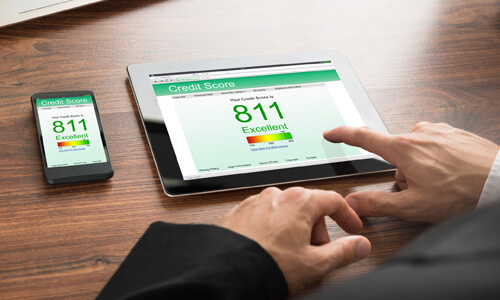Spring break is just around the corner, and a vacation can be a great opportunity to recharge your batteries and take a break from the daily grind. Below, we help you pre-plan your vacay budget to be sure you’re getting the most value out of each and every dollar you earmark for your travels.
Start by Assessing Your Budget and Goals
Lounging on a tropical island beach in the South Pacific, climbing Mount Everest or taking in the sights of Paris via a river cruise through the Seine… sound appealing? The price tags will reflect it, unfortunately. To keep your trip planning in step with your finances, start by compiling a list of possible vacation options (are you looking for adventure, sightseeing, relaxing on the beach, or a little bit of everything?) and then adding up the estimated cost of airfare, hotels, food, and activities. Try out travel expense tracker apps like Trail Wallet, Tripcoin, and Trabee Pocket, which could all be helpful in finding a destination that fits your desires and budget.
Know What All-Inclusives “Include”
Once you have an idea of your vacation goals and budget, keep an eye open for travel deals. For some, all-inclusive (AI) resorts can offer a great way to make travel dollars stretch since the price tag will often include lodging, food and drinks, gratuities, daily activities, entertainment, equipment rentals and other costs. Popular all-inclusive destinations include tropical locales like the Caribbean, Mexico, and Hawaii.
Be sure booking an all-inclusive really will offer cost savings, however: Do you plan to eat all of your meals at the resort or would you, instead, prefer to sample the local cuisine? Does the resort charge for sports equipment and activities that you have no plans to use? If, after you take final inventory of your plans, you realize you may spend a lot of your vacation outside of the resort, an all-inclusive resort may actually end up costing you more.
Save at the Airport
If your vacation requires airline tickets, see if you can’t make your travel dollars stretch a little further with the following tips:
- Build some flexibility in your travel dates: Making a couple of tweaks to your departure and arrival times can yield deep savings. Consider flying during off-peak hours or cut your trip short by a day or two to lower your costs. For example, a single round trip ticket from Dallas to Orlando might run $400 if flying during peak departure and arrival dates for spring break. However, taking a late night departure or returning on an early morning flight a day earlier could reduce the price by 15-20 percent or more.
- Pack wisely to minimize baggage fees: With the average price of a first checked bag around $30, and $40 for a second bag, it pays to pack with a critical eye. Consider investing in lightweight checked bags, wearing bulky items, placing heavier items in a carry-on or use laundry facilities at your destination to reduce your packed load.
- Pre-pay for airport parking: Don’t start your vacation off on a sour note by fighting for limited parking and paying premium prices. Many airports help customers who book parking several days or more in advance to access reduced fees and reserved spaces. Check out your local airport’s website or browse sites such as Airport Parking Reservations and SpotHero to find discounted parking rates.
Understand Currency Exchange Rates
If vacationing overseas, you may need to exchange your dollars for the destination’s currency. In some parts of the world, the dollar goes further than in others. If visiting the UK, for example, expect your dollar only to buy around 0.75 British Pounds. Conversely, one dollar can net you over five Turkish Lira. Be sure to check current exchange rates before you depart and avoid exchanging money in areas which appear unsafe or with vendors offering rates too good to be true.
And remember: Never visit a country purely due to a favorable currency rate; check out the U.S. State Department’s international travel site for tips to help keep you safe when traveling overseas.
Consider a Modern Staycation
We know, we know, no one wants to be “that guy” who camped at home in his backyard over spring break. But there’s always value in living within your means, and pocketing some of your savings for the future. A stay-at-home vacation, or “staycation” cuts costs by eliminating the need to purchase flights or hotels. Consider some unique staycation ideas including:
- Explore your creative side: Scan deals on local events sites including Groupon, Living Social, Nearify and more to find painting, sculpting, drawing, knitting, musical instrument instruction or other ideas to help spark some creativity.
- Experience an adventure: Try out an escape room adventure where you team up with friends and family to solve a series of timed puzzles and riddles in a themed room to “escape.”
- Expand your cultural horizons: A night out at a concert or tickets to a local performance could deliver a low-cost entertainment option and allow you to explore the arts in your area.
- Connect with other staycationers: The Meetup App and local Facebook Groups allow you to connect with new friends and other staycationers in your area looking to organize events.
- Head to the hills: If camping is part of your plans, mobile apps have come a long way in helping you plan an unforgettable and affordable getaway in the great outdoors. Check out Oh, Ranger! ParkFinder, Recreation.gov and the AllStays Camp and Tent App for inspiration.
Editor’s note: Quorum is not affiliated with any of the companies mentioned in this article, and derives no benefit from these businesses for placement in this article.






Comments Section
Please note: Comments are not monitored for member servicing inquiries and will not be published. If you have a question or comment about a Quorum product or account, please visit quorumfcu.org to submit a query with our Member Service Team. Thank you.